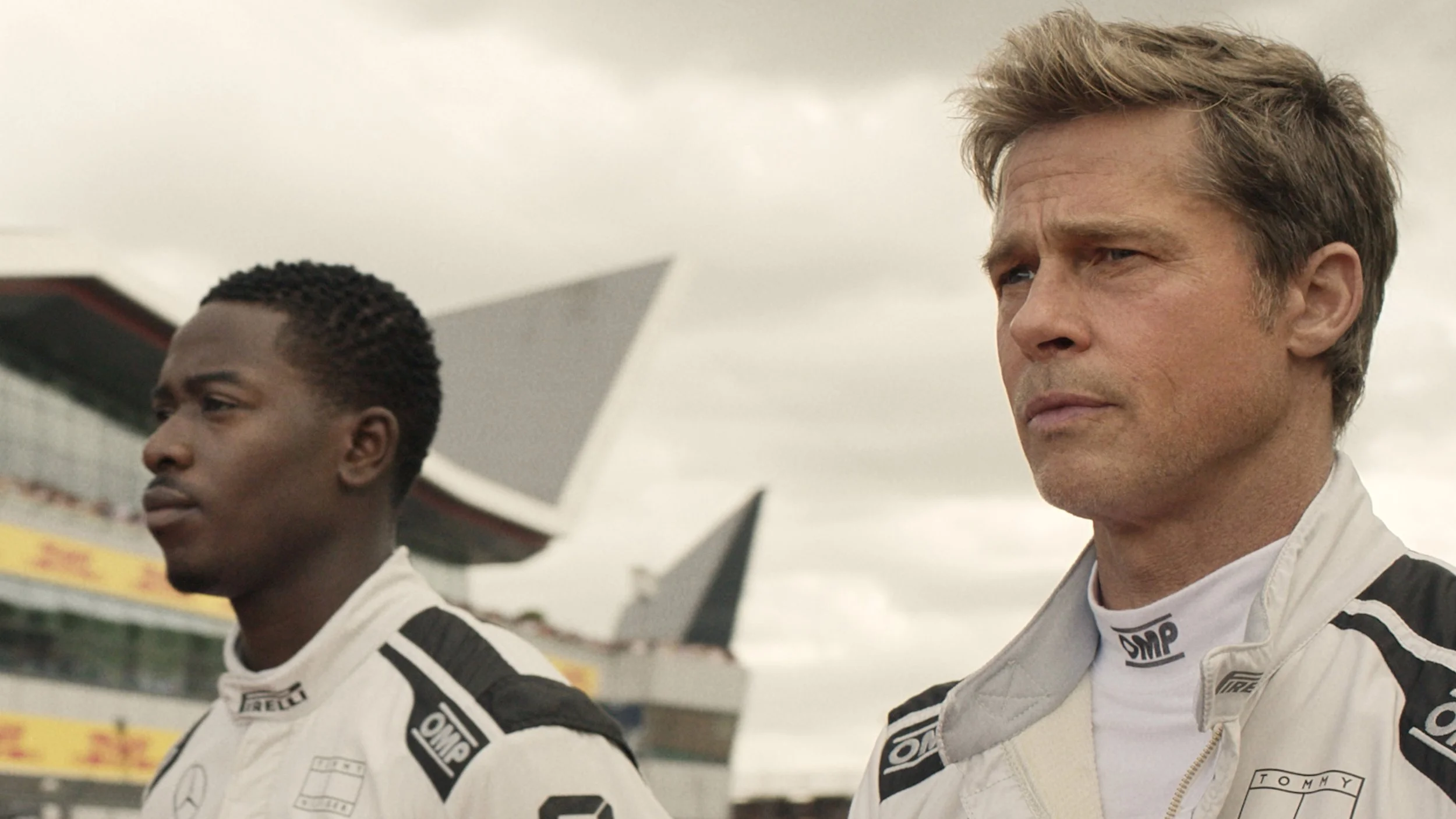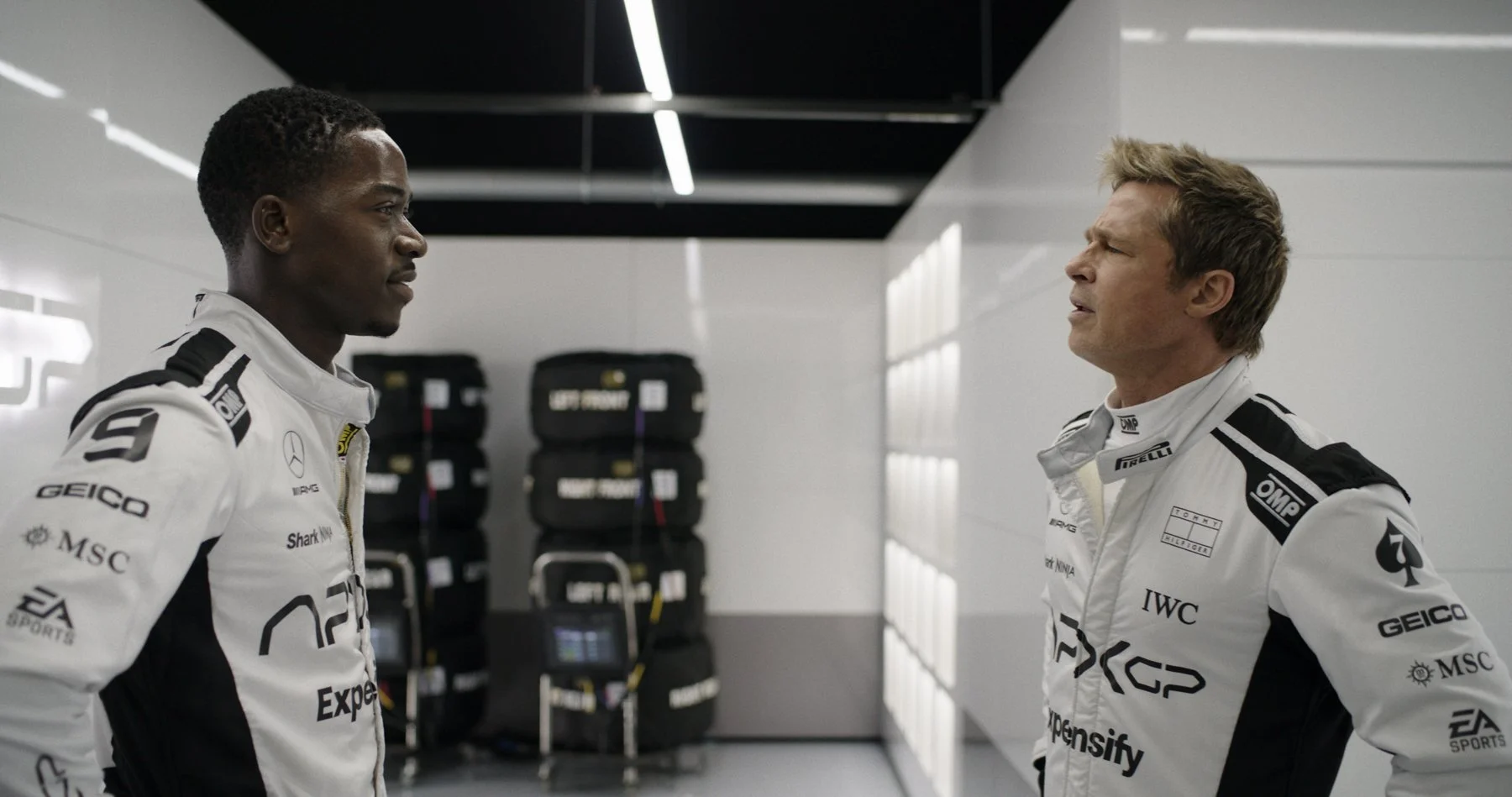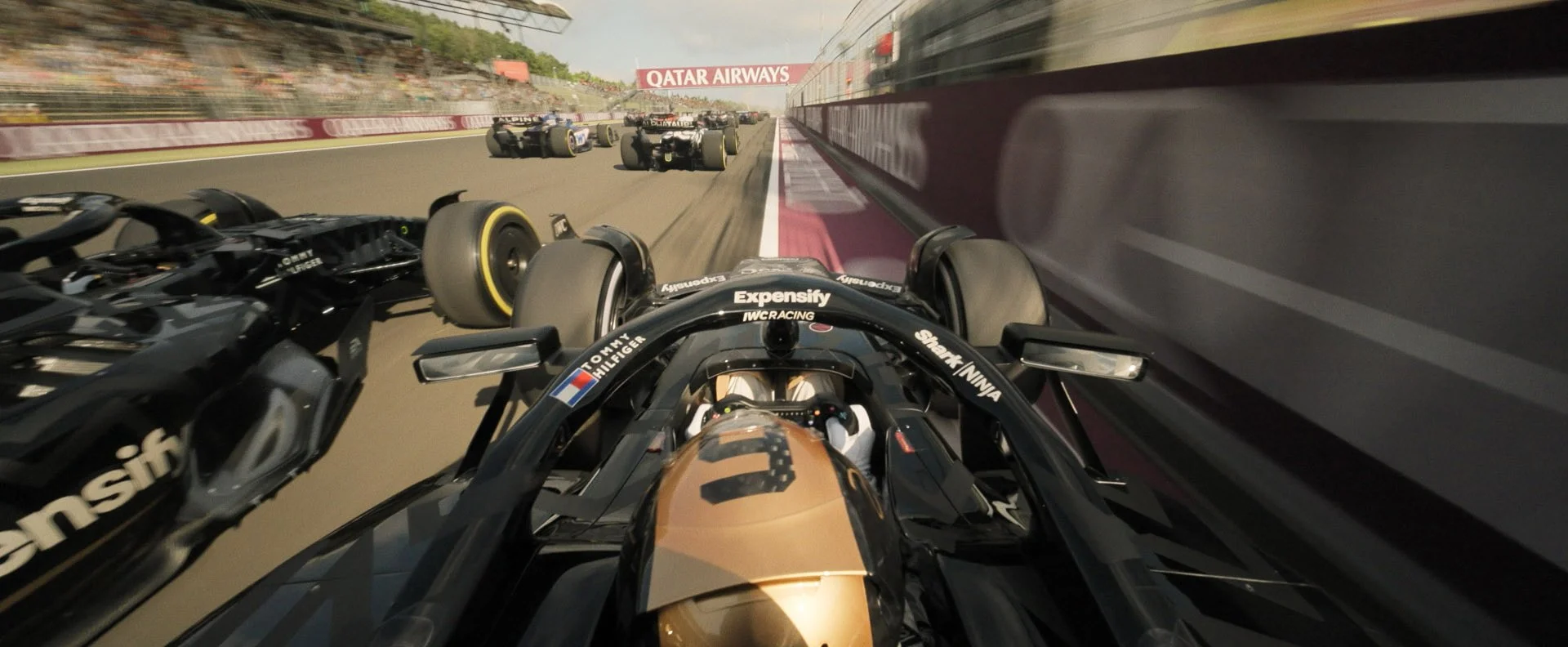F1 the Movie: Drive to Contrive

Right. So Hollywood has made a movie about Formula 1. And rather predictably, it’s full of drama, emotional backstories, slow-motion crashes, and Brad Pitt heroically piloting a race car at an age when most men are piloting sitting lawnmowers.
Now, Formula 1 in the real world isn’t exactly the stuff of cinema these days. Yes, it’s fast and glamorous and packed with more billionaires than a Davos dinner party but let’s be honest, most races involve the dominant team of the ear driving off into the distance while everyone else struggles to figure out which tyre compound doesn’t ruin their afternoon. Try turning that into a blockbuster.
So what have they done instead? They’ve cast Pitt who is 61, but in the film is generously portrayed as maybe… 50-something?? as a former driver returning to the grid with a backmarker team to mentor a hotshot young teammate. Realistic? Not in the slightest. Entertaining? Absolutely.
The series face you make when you’re about to make the circus look even more of a circus.
The plot is standard Hollywood sport-film fare. There’s the wounded prodigy. The weather-beaten veteran. A tragic crash. A miraculous recovery. A last-lap overtake. It’s Rocky IV with a steering wheel. But here’s the twist: unlike Days of Thunder or Driven (we don’t speak of Driven..yeah, probably one of the worst films ever made), F1 actually integrates with the real-world sport. They filmed on actual race weekends at Silverstone, Spa, and Hungary. They were in the garages. On the pit wall. Next to the actual teams.
And the cars, while not genuine F1 machinery, look the part. Dallara F2 chassis in cosplay, wrapped in APX GP (pronounced “apex” because who needs a second vowel?)
But, and there’s always a “but,” there’s something that happens when the cars are moving that will make any hardcore fan twitch. I won’t spoil it for you, but let’s just say the silhouette may be F1, but what’s under the hood is… not. We’ll let the geeks figure it out.
Now here’s where things go sideways. The APX GP team fictional, of course is meant to be a backmarker outfit. Think Alpine F1 with a paint budget. And yet somehow, they’re dicing it out at the front, overtaking championship contenders, setting fastest laps, and battling in the rain like they’re McLaren circa 1988. It’s thrilling. And utterly ridiculous.
Then there’s the matter of strategy. A sizable chunk of the film is devoted to Pitt’s character making so-called “strategic” sacrifices to help his teammate bag a few points for a team on the proverbial ropes — and without spoiling the madness (because honestly, you need to see it to believe it), let’s just say that in the real world, this sort of stunt would earn you a hefty fine, a race ban, and your name permanently etched next to Crashgate in the annals of F1 infamy. Seriously, go Google it. That didn’t end well either.
The low point, and we say this as people who actually sat through Driven, is a super-fantastic low-earth-orbit launch into the air followed by the obligatory fiery crash that sidelines JP, the young driver with all the potential, with what looks like… slightly toasty hands. Not broken bones. Not third-degree burns. Just hands that appear to have spent too long hovering over a barbecue (or maybe just an extra long soak in the tub). And yes, he’s back in the car three weeks later. Three. Weeks. After being flambéed like a marshmallow over a camp fire. It’s clearly just a convenient excuse to let Pitt hog the spotlight and add some dramatic “healing journey” subplot. But if it’s redemption you’re after, real redemption, with real stakes and real pain skip this and go watch Rush. That’s where you’ll find a proper driver. A real crash. And the story of Niki Lauda, who didn’t need Hollywood to make him legendary.
Serious face.
And then, because apparently burning hands and strategy calls that would get a real team a life time ban weren’t dramatic enough, we’re treated to a half-baked love story between Pitt’s character, Sonny Hayes and the team’s no-nonsense chief engineer, played by Kerry Condon. It’s awkward, fleeting, and about as believable as Haas nailing a pit stop. One minute they’re arguing about tire temps, the next they’re exchanging meaningful glances over telemetry. Frankly, the whole subplot felt like it was wedged in by a studio exec who thought, “You know what this race movie needs? Romance.” No, it didn’t.
And yet it’s still a blast. The racing sequences are loud, fast, beautiful, not over CGI’d and fantastically absurd. They sound like Formula 1. They look like Formula 1. If you squint and forget about the script, you might even believe it’s real-deal Formula 1.
In fairness, the on track racing sequences are done quite well.
Because here’s the rub: as much as it bends the truth, F1: The Movie accidentally captures what the sport has become. A global content engine. A traveling circus with billion-dollar storylines, Netflix-fueled melodrama, and just enough racing to justify the marketing spend.
It’s not a sport anymore. It’s Drive to Survive (DtS): The Motion Picture and honestly, that might be exactly what Liberty Media ordered.
So should you see it? Yes, if you’re the sort of person who doesn’t mind realism being sacrificed at the altar of entertainment. It’s slick, shiny, silly, and smells faintly of tyre smoke and testosterone. In other words, it’s Formula 1. Just with more slow motion and fewer Verstappens.
We have to imagine that like DtS, the creators of F1 were tasked with weaving together complex narratives, capturing amazing real-time on track open-wheel racing, while making it interesting to more than just the hardcore fans, and generally entertaining. This is a pretty tough needle to thread, and threading is exactly what they did. It’s a good watch and one we can actually recommend to the less, or non-automotively inclined.
The real F1 circus should take note that the stuff of the F1 movie may be a little sensational and unrealistic, but it might have provided more excitement in its two hour and 35 minute run time than in an actual F1 season. Just something to think about….and arguably not that much of an exaggeration….



